| Vocademy |
Connectors
There are many types of connectors used to connect electronic circuits
to each other and the outside world. Some of the most common are shown
below.
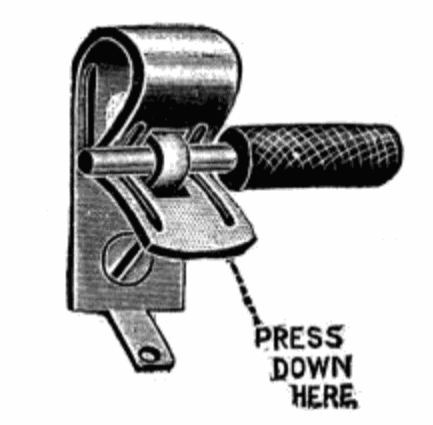 Fahnestock clip |
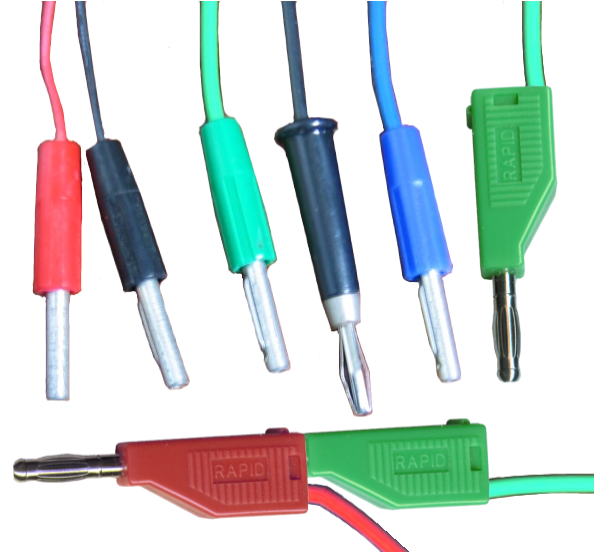 Banana plugs |
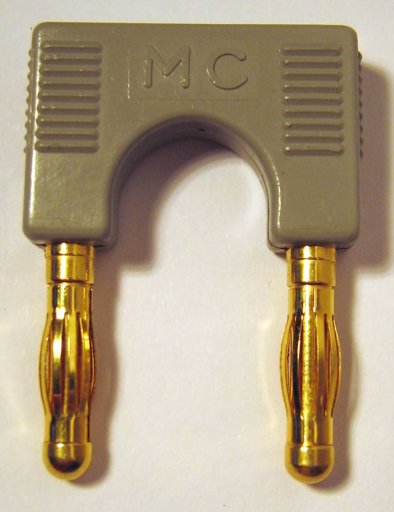 Dual banana plug |
The Fahnestock clip is mostly obsolete but is still used in classrooms
for demonstration circuits. Banana plugs are still widely used.
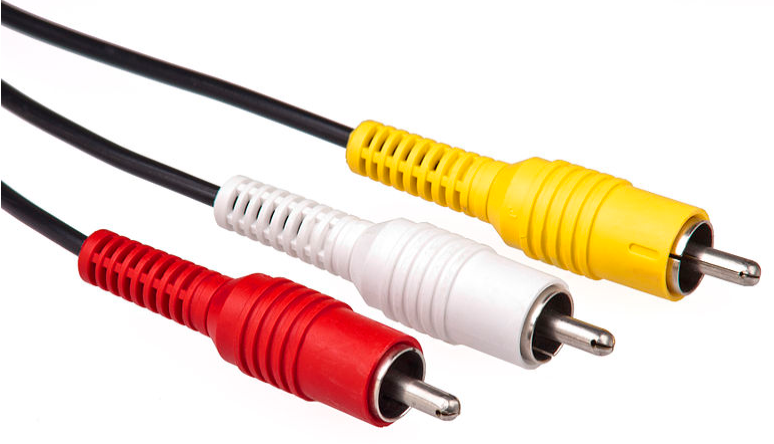 RCA (phono) plugs |
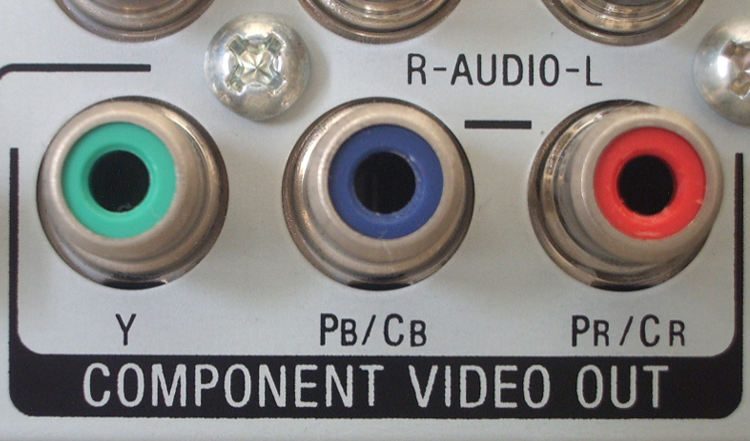 RCA (phono) jacks |
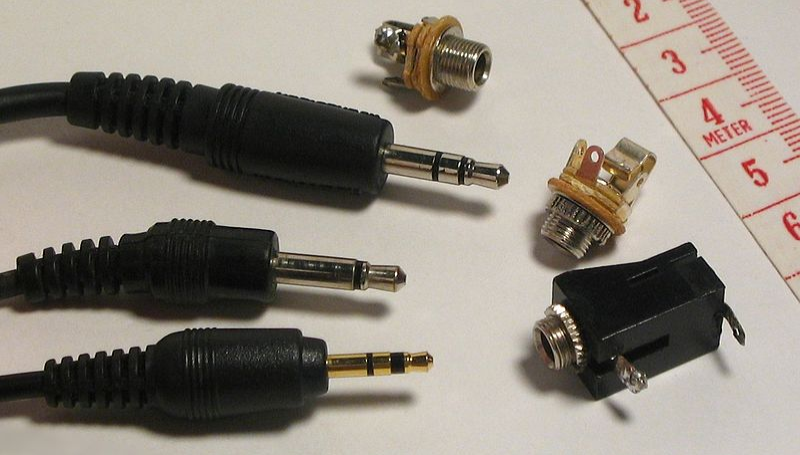 Phone plugs and jacks Subminiature stereo (bottom), miniature mono and stereo (above).
|
RCA connectors are sometimes called phono connectors because they were
commonly used to connect phonograph turntables to amplifiers. RCA
connectors typically connect to shielded cable (the center conductor
surrounded by a cylindrical shield conductor). A disadvantage of the
RCA connector is that the center conductor makes contact before the
outer conductor. Without the outer shield connected, noise, often a lot
of it, enters the circuit for the short time before the outer conductor
is connected. In audio systems, this causes a loud buzzing in the
speakers. Phono connectors are not to be confused with phone
connectors, which were widely used for telephone exchange switchboards
(1/4-inch standard version). Many phone jacks have built-in switches
that switch a circuit to the plug. For example, with the plug out sound
signals go to a speaker. When the plug is inserted into the jack, the
speaker is automatically disconnected and the signal is routed to the
headphones through the phone plug.
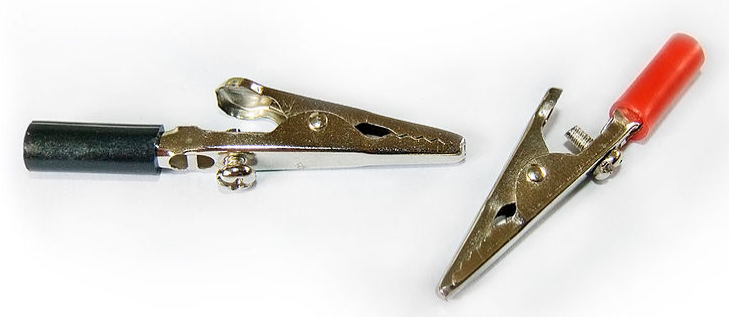 Alligator (crocodile) clips |
|
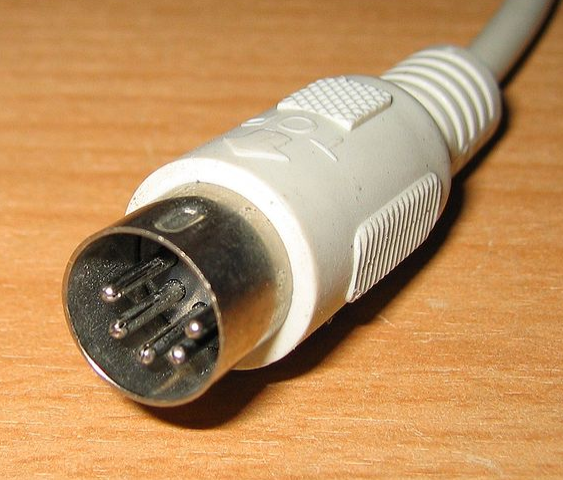
DIN (Deutsches Institut für Normung) connector
|
|
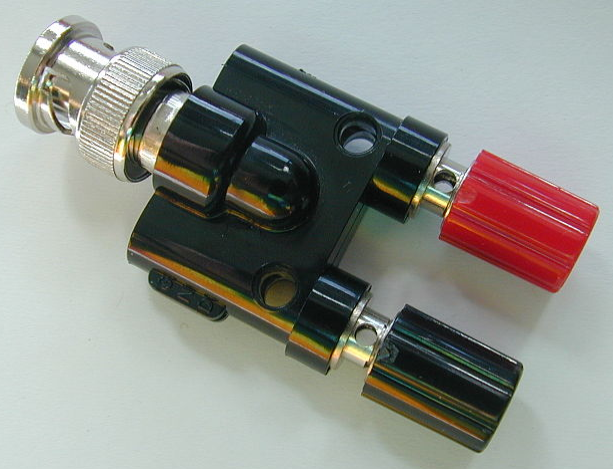
Combination binding post, banana jack and BNC adapter
|
The right image above has binding posts (wires are threaded through the
holes then the knobs are tightened onto the wires). The binding posts
are also banana jacks and can accept banana plugs in the ends. The
holes in the side of the adapter also accept banana plugs. All this
adapts to a BNC connector.
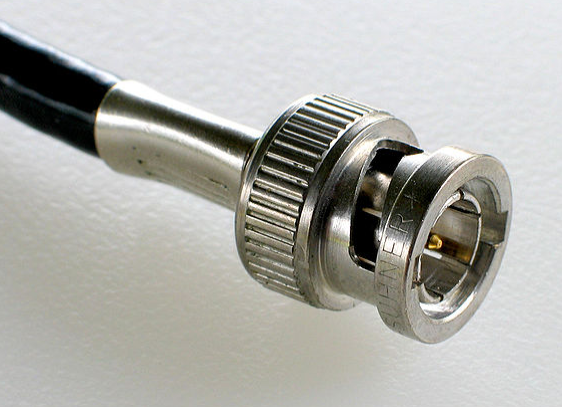 BNC connector |
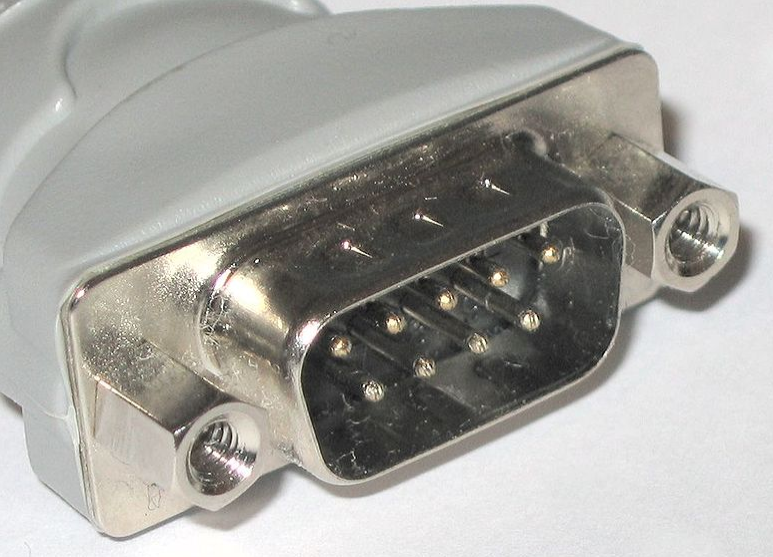 D-sub, D-type or D-shell connector |
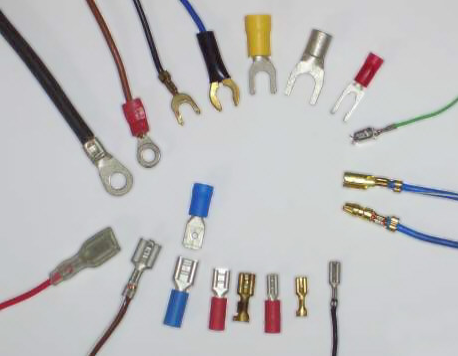 Blade connectors |
The BNC connector (Bayonet Neill-Concelman) is named for its designers,
Paul Neill (Bell Laboratories) and Carl Concelman (Amphenol). It is a
shielded connector like the RCA connector but has a controlled
characteristic impedance (something you will learn about in
communication circuits). It also has a locking “bayonet” mechanism. To
disconnect it you have to push then turn it.
The D-sub connector is named for the shape that is similar to the letter “D.” It is mistakenly called a DB connector in some computer circles. Hewlett-Packard calls the 25-pin version the DB-25 and this was picked up in the computer industry. HP calls no other version of the D-sub connector a “DB” connector.
Blade connectors come in several styles such as spade lugs (flat or forked), bullet lugs and ring lugs.
The D-sub connector is named for the shape that is similar to the letter “D.” It is mistakenly called a DB connector in some computer circles. Hewlett-Packard calls the 25-pin version the DB-25 and this was picked up in the computer industry. HP calls no other version of the D-sub connector a “DB” connector.
Blade connectors come in several styles such as spade lugs (flat or forked), bullet lugs and ring lugs.
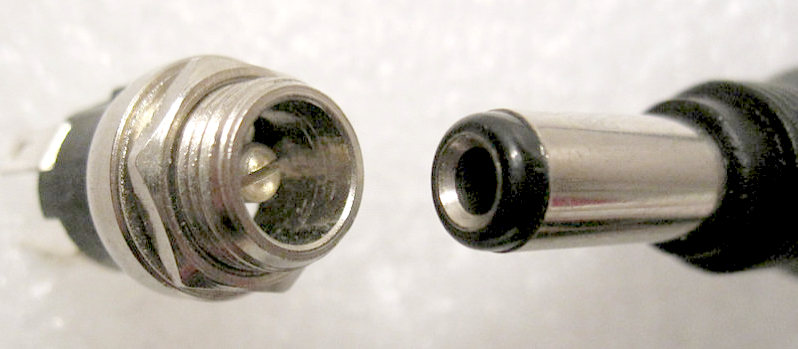 Coaxial power connector |
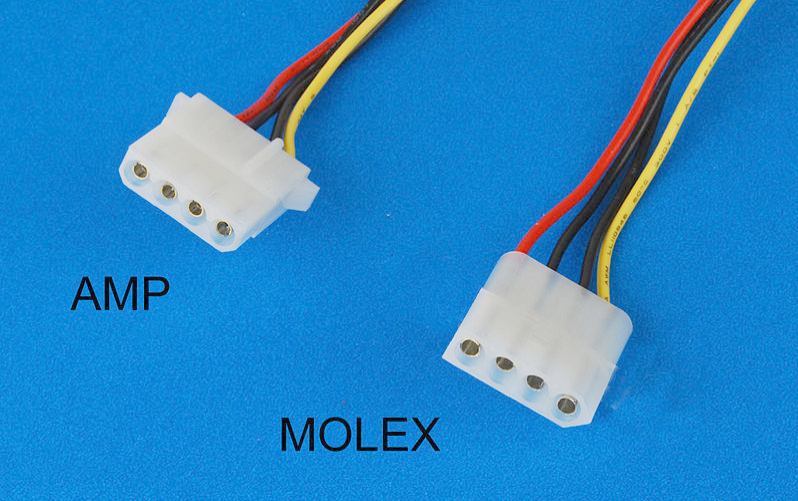 Molex (Amp) connector |
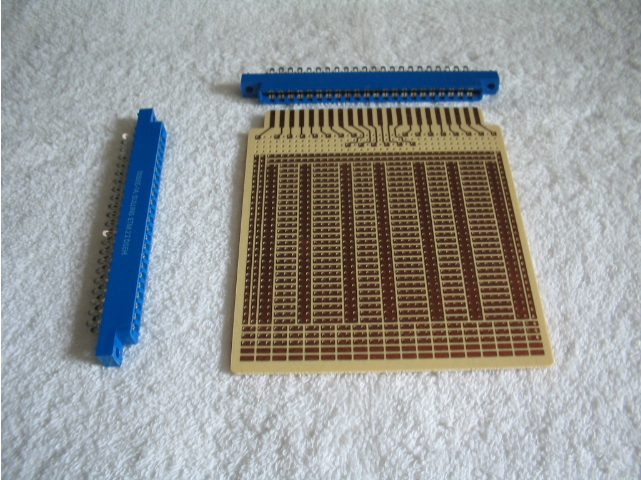 Edge connector |
Coaxial power connectors come in various sizes that are incompatible
with each other. Connectors for higher voltages are often chosen so
that they cannot be plugged in to lower voltage devices.
The Molex connector (four-pin version shown) was patented in the 1960s. The similar, but incompatible AMP connector is usually called a Molex connector by mistake. Each pin or receiver is crimped to an individual wire then inserted into the connector shell where it snaps into place. The AMP connector was the power connector of choice for hard disk drives in computers for many years (and always called a Molex connector).
The Molex connector (four-pin version shown) was patented in the 1960s. The similar, but incompatible AMP connector is usually called a Molex connector by mistake. Each pin or receiver is crimped to an individual wire then inserted into the connector shell where it snaps into place. The AMP connector was the power connector of choice for hard disk drives in computers for many years (and always called a Molex connector).
Myths:
BNC stands for British Naval Connector, Bayonet Nut Connector, Berkeley
Nucleonics Corporation or some other nonsense.
I originally didn't believe it stood for “Bayonet Neill-Concelman”
either. However, the Amphenol catalog confirms the name.[1]
D-sub connectors are called DB-9M (9-pin male), DB-25F (25-pin female),
etc.
Actually, these names have been used in the computer industry for so
long that they are leaking into the electronics industry. The original
names used by Hewlett-Packard are DA-15, DB-25, DC-37, DE-50 and DE-9.
The number indicates the number of pins. In electronics, these
connectors are usually just called D-sub, D-type or D-shell connectors. However, the
names commonly used in the computer industry, such as DB-15M for the 15-pin male and
DB-9F for 9-pin female, are making inroads into the electronics industry lexicon.
Connetors